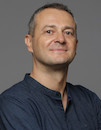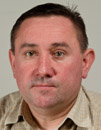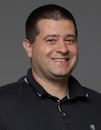Electroacoustics 2
Data is displayed for academic year: 2023./2024.
Course Description
Course includes advanced methods of designing and construction of electroacoustic transducers. This includes analysis of electroacoustic analogies, design and use of microphones, loudspeakers and loudspeaker cabinets. Course especially includes analysis and construction of piezoelectric transducers and non-linear effects in the transducers. The course also cover the field of noise measurement and designing of system for low noise emission. The course also includes a field of environmental noise reduction.
Study Programmes
University graduate
[FER3-HR] Audio Technologies and Electroacoustics - profile
(2. semester)
[FER3-HR] Communication and Space Technologies - profile
Elective Courses
(2. semester)
[FER3-HR] Computational Modelling in Engineering - profile
Elective Courses
(2. semester)
[FER3-HR] Computer Engineering - profile
Elective Courses
(2. semester)
[FER3-HR] Computer Science - profile
Elective Courses
(2. semester)
[FER3-HR] Control Systems and Robotics - profile
Elective Courses
(2. semester)
[FER3-HR] Data Science - profile
Elective Courses
(2. semester)
[FER3-HR] Electrical Power Engineering - profile
Elective Courses
(2. semester)
[FER3-HR] Electric Machines, Drives and Automation - profile
Elective Courses
(2. semester)
[FER3-HR] Electronic and Computer Engineering - profile
Elective Courses
(2. semester)
[FER3-HR] Electronics - profile
Elective Courses
(2. semester)
[FER3-HR] Information and Communication Engineering - profile
Elective Courses
(2. semester)
[FER3-HR] Network Science - profile
Elective Courses
(2. semester)
[FER3-HR] Software Engineering and Information Systems - profile
Elective Courses
(2. semester)
Learning Outcomes
- Define and demonstrate electroacoustic analogies
- Classify and analyse types of microphones
- Classify and analyse types of loudspeakers
- Define and analyse piezoelectric transducers
- Demonstrate measurements of environmental and machine noise
- Assess how noise influences on humans
Forms of Teaching
Lectures
The lectures will cover basic theoretical knowledge in the field of electroacoustic transducers.
Seminars and workshopsStudents will write a seminar in the field of electroacoustic transducers.
ExercisesStudents will solve mathematical problems in the field of electroacoustic transducers.
LaboratoryStudents will analyze parameters in the field of electroacoustic transducers through laboratory exercises in small groups.
Grading Method
| Continuous Assessment | Exam | |||||
|---|---|---|---|---|---|---|
| Type | Threshold | Percent of Grade | Threshold | Percent of Grade | ||
| Laboratory Exercises | 0 % | 15 % | 0 % | 15 % | ||
| Seminar/Project | 0 % | 15 % | 0 % | 15 % | ||
| Mid Term Exam: Written | 0 % | 20 % | 0 % | |||
| Final Exam: Written | 0 % | 20 % | ||||
| Final Exam: Oral | 30 % | |||||
| Exam: Written | 0 % | 40 % | ||||
| Exam: Oral | 30 % | |||||
Week by Week Schedule
- Electromechanical analogies, Sound emission of non-ideal cones, Nonlinear oscilator; Duffing equation, Finite amplitude effects, N-waves, square waves, Shock waves, Acoustic streaming, Acoustic cavitation
- Electrical and acoustical types of microphones, Measurement and calibration of microphones, Measurement of microphone parameters
- Sound emission of non-ideal cones, Loudspeakers types, Electrostatic, piezoelectric and ion loudspeakers, Measurement of loudspeaker parameters
- Hydrophone construction; Hydrophone parameters, Accelerometer construction; Accelerometer parameters, Calibration of piezoelectric transducers, Piezoelectric harvesting devices, Piezoelectric transformers
- Instrumentation, Measurement norms in acoustics, Measurement uncertainty
- Sound pressure measurement; Sound level meters, Sound intensity measurement, Calibrated measurement signals, Calibrated measurement sources, Measurements of acoustical elements, silencers, barriers
- Noise indicators, Measurement microphones, Sound in tubes and ducts, Norms and regulation, Noise maps
- Midterm exam
- Characteristics and parameters of vibration, Measurement accelerometers, Hand-arm vibration; Whole-body vibration, Norms and regulation
- Methods of noise protection, Airborne sound insulation; Impact noise sound insulation, Noise barriers, Personal noise protection
- Acoustic characteristics of instruments, Acoustic characteristics of singing voice, Directivity of musical instruments, Influence of rooms on the sound of musical instruments
- Speech intelligibility
- Acoustical characteristics of voice signal, Voice generation, Anatomy and modelling of the vocal tract
- Explicit and implicit numerical methods, Application of BEM, FEM, volume element method and stastical method in acoustics, Hybrid numerical methods, Restrictions and applicability of numerical methods in acoustics
- Final exam
Literature
Ivan Jelenčić (1991.), Zvučnici,
Tihomir Jelaković, Miomir Vujnović (1969.), Mikrofoni,
For students
General
ID 222432
Summer semester
5 ECTS
L2 English Level
L2 e-Learning
45 Lectures
0 Seminar
15 Exercises
10 Laboratory exercises
0 Project laboratory
0 Physical education excercises
Grading System
Excellent
Very Good
Good
Sufficient


 Pristupačnost
Pristupačnost

